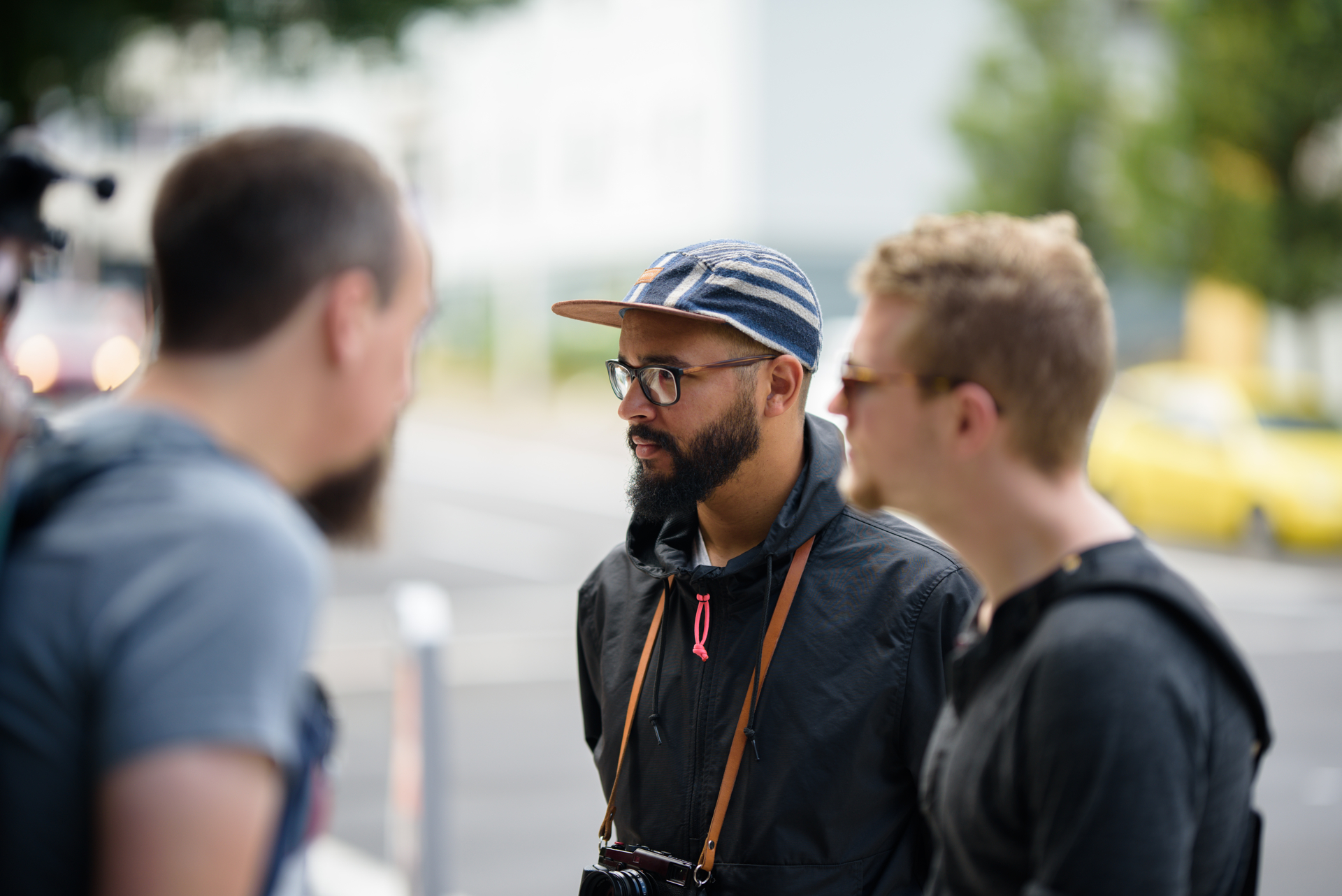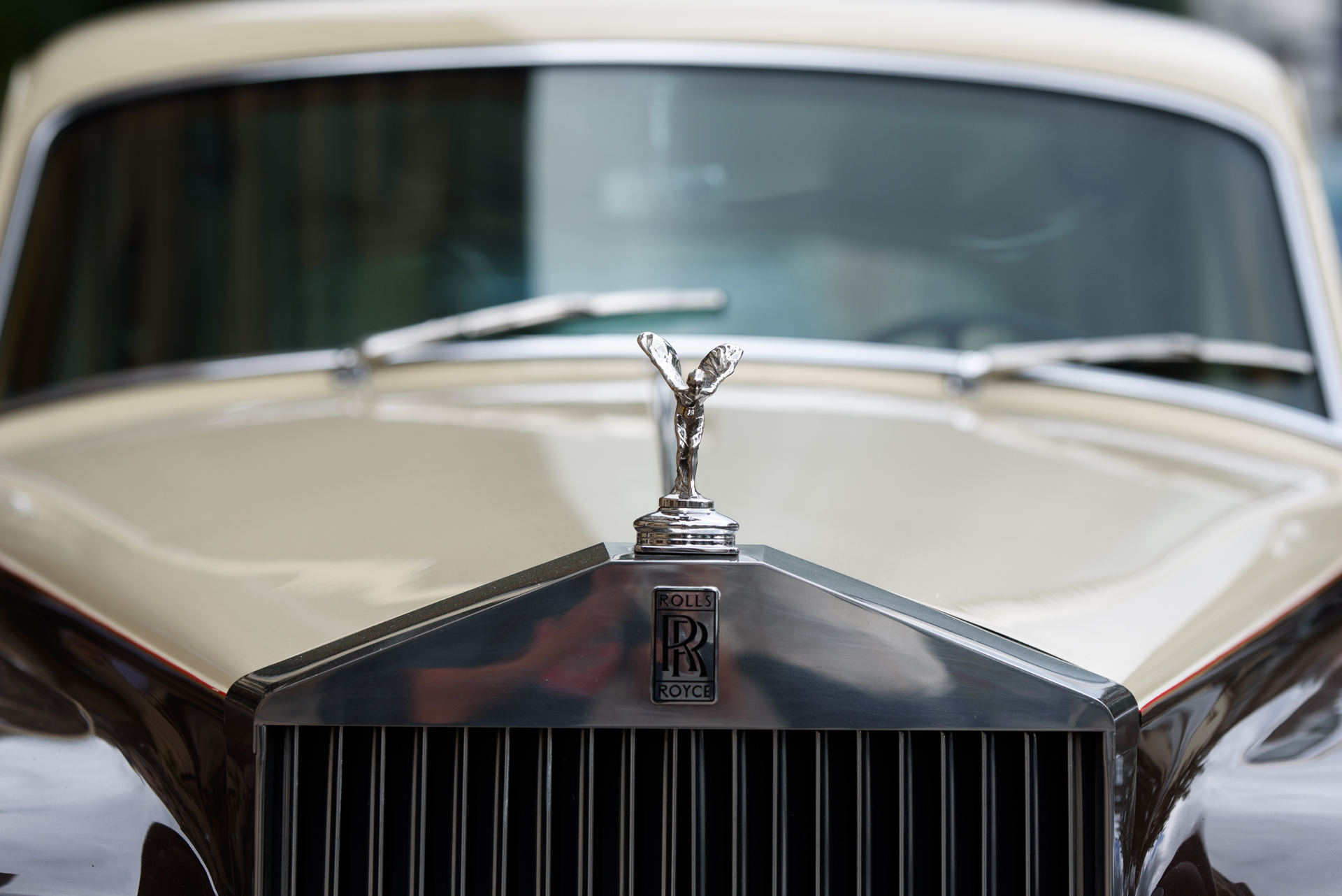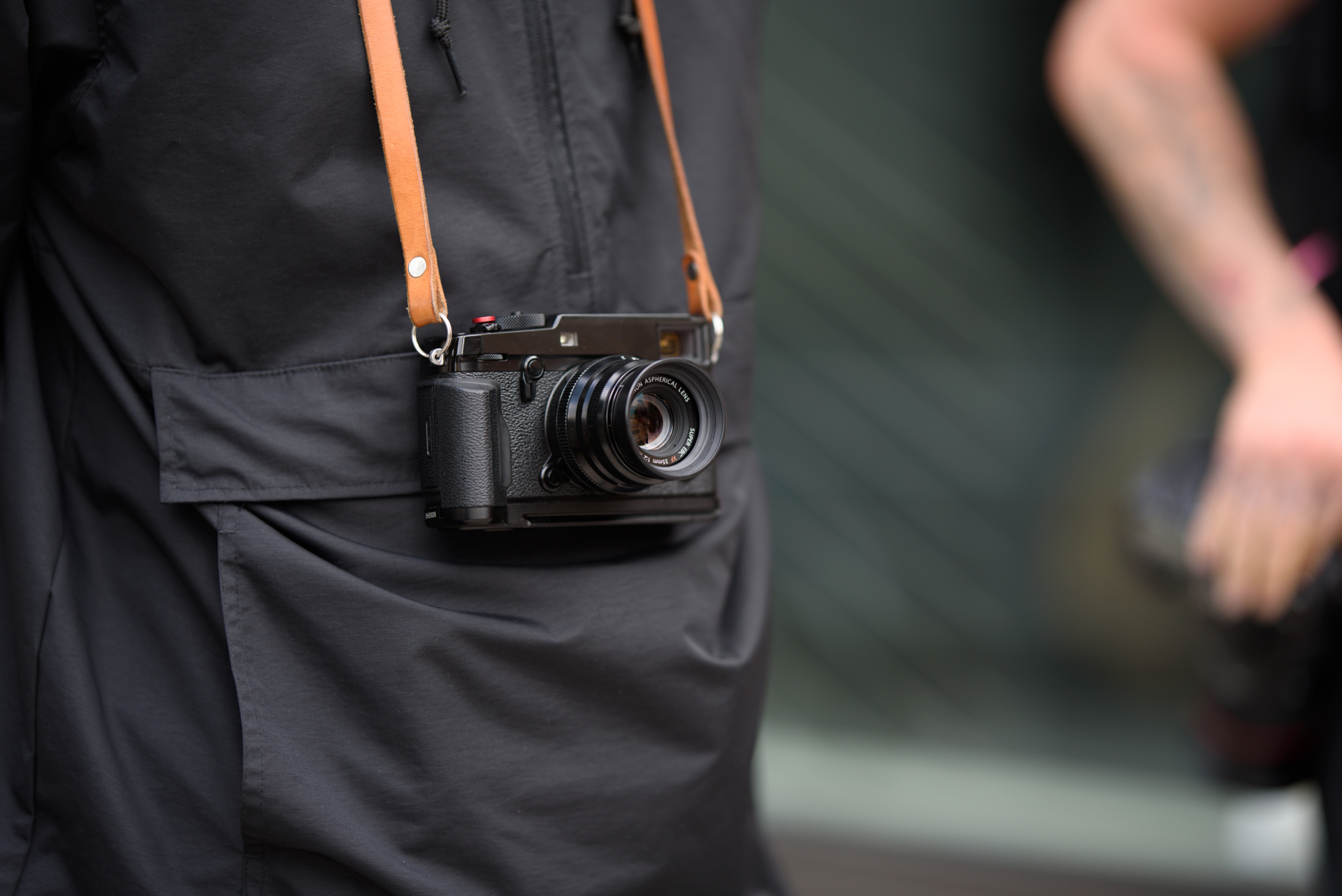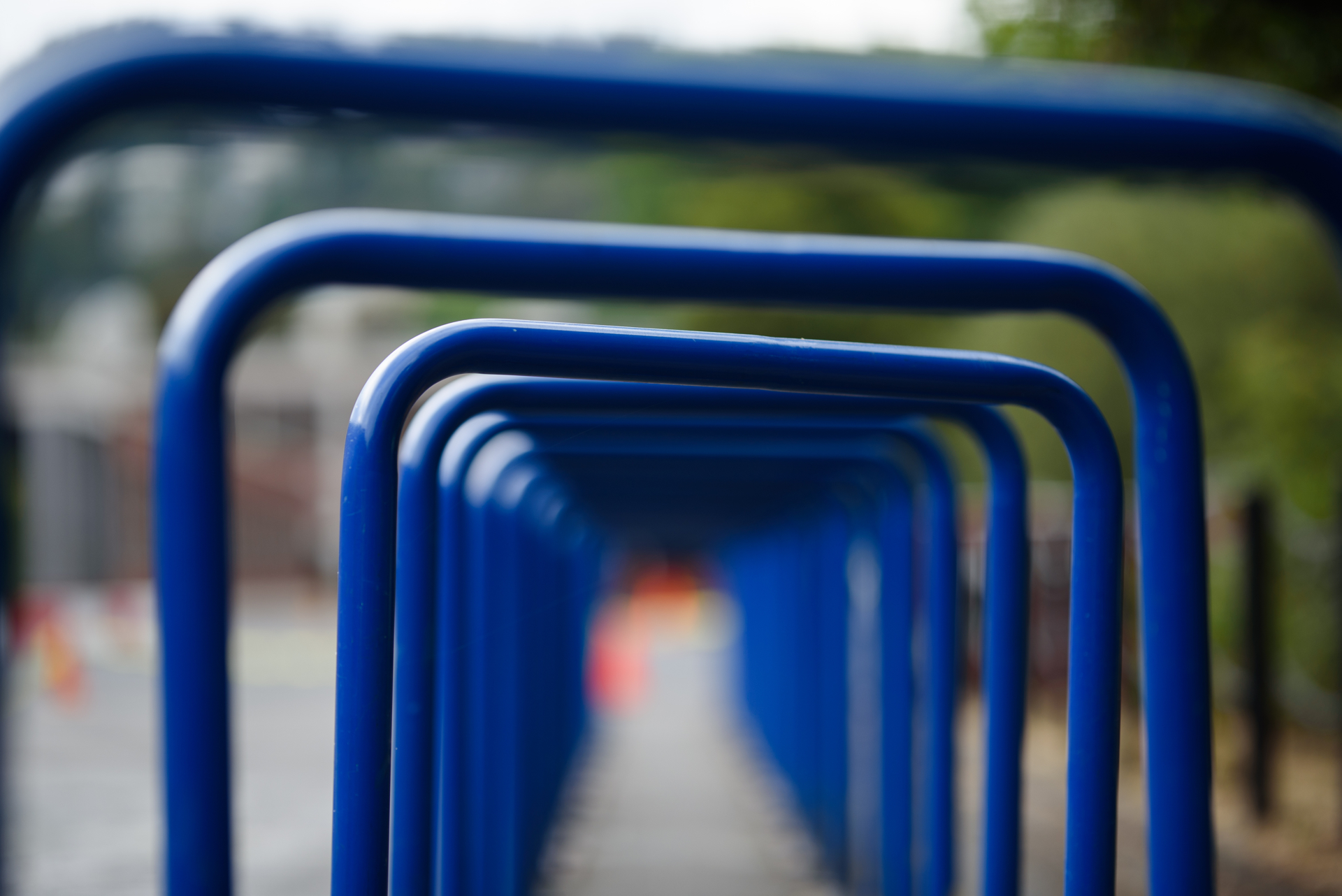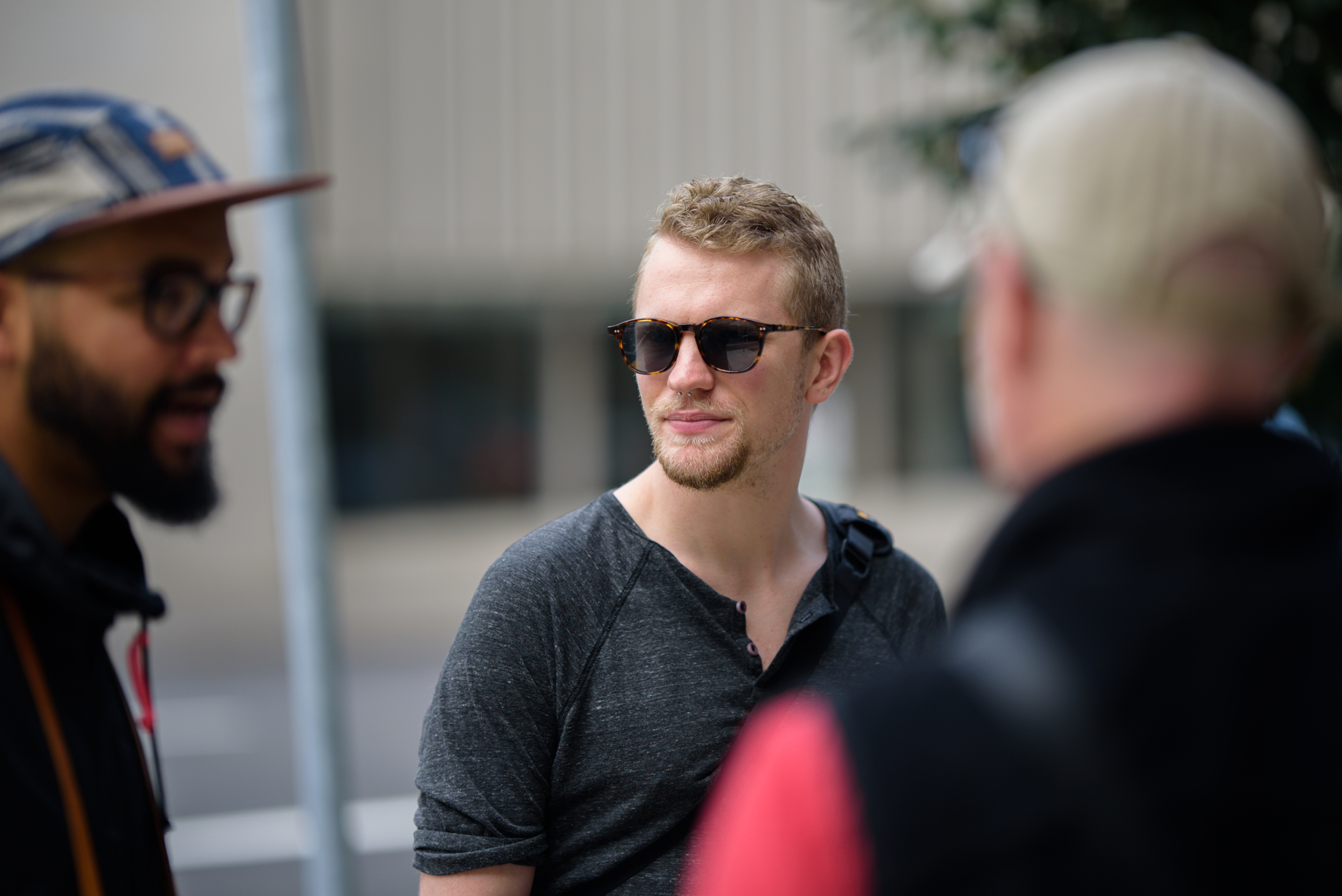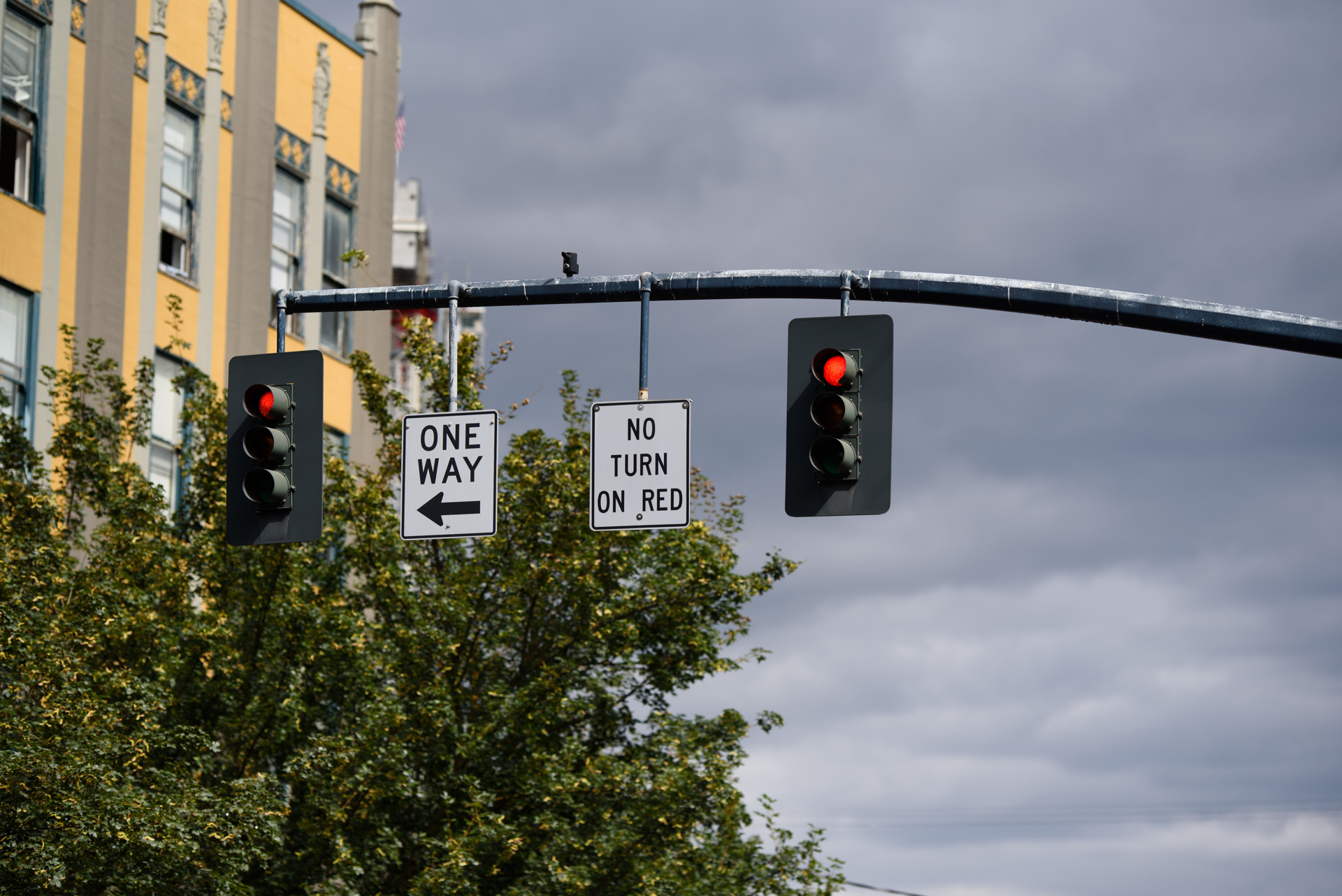- Exceptional image quality
- Very well made
- Rare focal length/aperture combination
- Virtually free of aberrations and distortion
- Beautiful bokeh
- Absolutely massive
- Occasional back-focusing issues
The Sigma 105mm F1.4 Art is the apparent result of what happens when engineers are given carte blanche on a project. Designed without the restraints of practicality, it’s a beautiful brute of a lens that cares only about one thing: being the best portrait lens money can buy. It weighs 3.6 pounds — a full pound heavier than the longer Sigma 135mm F1.8 Art — and the front element is so hilariously huge that it draws expressions of bewilderment even from experienced photographers. It is unwieldy and unapologetic, and it demands a sometimes exhaustive attention to detail on the part of the photographer. But if you put in the time to tame it, it will reward you with impressive sharpness and buttery smooth bokeh, the likes of which you can’t get elsewhere.
As a category, the 105mm f/1.4 full-frame lens is still in its infancy, and Sigma’s entry represents just the second such lens on the market, following Nikon’s AF-S Nikkor 105mm f/1.4E in 2016. In typical Sigma fashion, the third-party manufacturer has introduced its version well below the cost of the Nikon, at just $1,600 compared to $2,200 (the lens is available for Canon EF, Nikon F, Sigma SA, and Sony E mounts). However, built for the demands of professional use, it is hardly a budget alternative. Like most things, it’s not absolutely perfect, but after testing it in a variety of settings, from a casual photography meetup to a 12-hour wedding shoot, we can attest that Sigma has once again delivered a high-end lens with exceptional value.
Expert design and craftsmanship
On the outside, the most striking feature of the 105mm Art — other than the massive front element — is the tripod collar. This is something usually reserved for longer focal lengths, but the front-heavy nature of this lens makes it useful here. In addition to having a standard 1/4-inch thread, it offers built-in compatibility for Arca-Swiss tripod heads. For reasons we’ll get into later, we highly recommend using a tripod with this lens — but if you don’t, the tripod collar can be removed and replaced with a protective cover, essentially a fancy rubber band that covers up the mounting points and gives it a finished aesthetic. Removing the collar will shave off 0.28 pounds, although most of that weight is regained if you attach the lens hood.
Like every other Art-series lens we’ve tested, the build quality is superb. With a water repellent coating on the front element and a gasket surrounding the rear mount, it is dust and splash proof — a feature that actually came in handy when it rained on us during one of our test shoots. The materials all feel excellent, and the lens hood is even made from carbon fiber reinforced plastic, which presumably saves a few grams — not that it helps much on a 3.6-pound lens.
As with other Art-series lenses, the aperture diaphragm is built from nine rounded blades for more circular bokeh even when stopped down.
From an objective point of view, the 105mm F1.4 Art borders on perfection.
The optical design itself uses 17 elements in 12 groups, which is quite complex for a prime (the Nikon 105mm f/1.4 uses 14 elements in nine groups). While this contributes to the lens’ heavy weight, it also allows Sigma to correct for a variety of optical problems. That large front element, for example, helps reduce vignetting.
However, that element also gives the lens an enormous filter size of 105mm — yes, the filter diameter is the same as the focal length. Still, if you’re a Nikon shooter debating between this and the Nikon version (which has an 82mm filter thread), the extra cost of a larger filter will go only a small way toward making up the sizable cost difference between the two lenses.
Image quality that is simply stunning
From an objective point of view, the 105mm F1.4 Art borders on perfection. It is tack sharp from the center to the edge, with minimal vignetting that has all but vanished by f/2 and is easily removed in post, regardless.
Distortion is imperceptible while chromatic aberration is basically not present at all, except for a very slight amount in the defocused areas of the image. From hair to fine textiles, it’s as if this lens was tailor-made to render high-frequency details flawlessly, and likely out-resolved the 24-megapixel Nikon D750 on which we had it mounted. It is a fantastic choice for lifestyle and fashion photography, particularly for full-length portraits when you need detail in everything from the hair to the shoes, but still want a shallow depth of field to separate the subject from the background.
At the end of the day, this is one of the most capable portrait lenses we have ever tested; it’s just not the easiest to use.
From a subjective point of view, we absolutely loved the images we got from this lens. It’s not just how shallow the depth of field can be, but the actual quality of the out of focus areas that impressed us. Blur circles are rendered with softer edges, making them less distracting when shooting against an otherwise busy background. Wide open, those blur circles take on a slightly elongated shape, but stopping down to f/2 constrains them to nearly perfect circles.
For all practical purposes, f/2 is the sweet spot for this lens. Not only does it clear up the vignetting and make the bokeh “more perfect,” it gives you slightly more leeway with the depth of field while still offering ample subject separation. For close-ups, don’t be afraid to stop down to f/4 or even f/5.6 — that nine-bladed iris ensures nice-looking background blur even at these smaller apertures, while the additional depth of field will make it easier to keep your subject in focus.
Worth the weight?
This may be the best portrait lens we’ve ever used — and if it’s not, that title likely goes to another Art-series Sigma, perhaps the 135mm f/1.8 or the 85mm f/1.4 — but it left us with one admittedly strange complaint: Does it really need to be this good? We could have easily lived with more intrusive vignetting if it meant shaving off a few ounces from that front element. We could have endured closing the aperture down by a stop to sharpen up the edges if a less-perfect optical formula could lower the complexity and weight.
This isn’t just us reaching to find anything wrong; the size and weight of the 105mm Art are a real drawback. Beyond the space it takes up in your camera bag and related backache of carrying it around, it actually complicates the shooting process. Remember when we mentioned needing a tripod? In our experience, we had to use a shutter speed of at least 1/250 second in order to ensure consistently sharp results — anything slower, and we simply couldn’t hold the lens steady enough.
Fatigue is a real problem here. We often got sharper results shooting at f/1.4 than f/4 due to the motion blur from the resulting slower shutter speed. An optical stabilization system could have helped, but this would have further increased the weight of the lens (not to mention the price).
Additionally, while autofocus speed was quite fast, we did notice the lens back-focused quite frequently, which, naturally, was more noticeable the closer we were to the subject. We shot an entire series of portraits at f/1.4 where the model’s ears were in focus but not her eyes. This may be solvable using Sigma’s USB lens dock, which lets you manually dial in focus adjustments to match your specific copy of the lens to your specific camera body, but be sure you do plenty of testing before you change anything.
To be clear, none of the problems outlined above are necessarily deal-breakers, but we do feel it is important to highlight the issues we faced in the real world while shooting this lens. At the end of the day, this is one of the most capable portrait lenses we have ever tested; it’s just not the easiest to use. If at all possible, we’d recommend renting it or testing it out in a camera store to see if you can live with the size and weight before you commit. If you don’t mind putting in the effort, you will get excellent results that you simply can’t get with any other lens.
Our Take
To say we were blown away with the Sigma 105mm F1.4 Art is an understatement, but it’s also a reaction we’ve come to expect from Sigma Art glass. This is an impressively sharp, subjectively beautiful portrait lens that is essentially without peer. Like other Sigma lenses, it also offers incredible value for the money; but whether or not one ends up in your camera bag depends largely on how well you can handle the size and weight.
But as frustrating as it was at times to work with a 3.6-pound prime lens, we have to admire Sigma’s engineers for going all-in on the design, and its managers for allowing it to happen. It’s easy to take one look at this lens and ask, Why? Sigma’s response seems to be a simple yet proud, Why not?
Is there a better alternative?
This depends on how closely you are married to the concept of a 105mm lens with a maximum aperture of f/1.4. If you demand both of those things and shoot anything other than Nikon, then the Sigma is really your only choice. But even for Nikon users, we doubt the $2,200 AF-S Nikkor 105mm F/1.4E outshines the Sigma by $600 — it is, however, much more compact and lighter weight.
If you can “settle” for an 85mm f/1.4, you’ll find a lens that is much easier to work with. The Sigma Art version is very good, although we have also been impressed by first-party options, like Canon’s 85mm F/1.4L IS. We do have a slight preference for the 105mm focal length when it comes to portraiture, but this is largely subjective and situation dependent.
How long will it last?
There is no reason to expect this lens will be superseded or bested anytime soon, and with its excellent build quality it should easily last for many years to come. We have some concerns about keeping that humongous front element protected, but if you take good care of your equipment, it shouldn’t be a problem.
Should you buy it?
Yes, if you shoot portraits. From weddings to headshots to fashion, we can wholeheartedly recommend the Sigma 105mm F1.4 Art to essentially any walk of portrait photographer. You do need to be ready to endure working with such a heavy lens — and we also suggest purchasing the $60 USB dock so you can adjust the focusing, if necessary — but if you’re okay with that, or don’t mind using a tripod, then it is an excellent investment. You won’t find a better value, or really a better lens.






